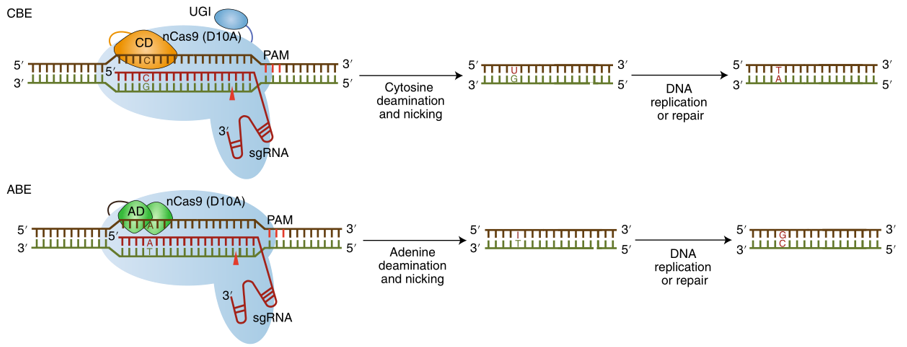
Our promise to you:
Guaranteed product quality, expert customer support.
 24x7 CUSTOMER SERVICE
24x7 CUSTOMER SERVICE
 CONTACT US TO ORDER
CONTACT US TO ORDER
Base Editing in Plants 
CRISPR/Cas9 PlatformCB dedicates to improve the transformation efficiency of plant and optimize the genome editing system for years. Now, we proudly offer base editing service to introduce single nucleotides change in many species, including rice, tomato, Arabidopsis and tobacco. With years of experience in plant genome editing, our scientists are confident to bring customer high-quality service with the latest technology. Moreover, considering the limitation of editing window scope, we will assist you with free counseling and evaluation for specific project.
In plants, many agriculturally crucial traits are conferred by single-nucleotide polymorphisms (SNPs) or by dominant gain-of-function point mutations. Such traits can be generated by base editor, for example, single amino acid substitution (ACC-C2186R in rice, ALS-P174F in wheat) confer herbicide resistance, providing an ideal target for base editing. CRISPR/Cas9 PlatformCB recently introduces two different base editors, cytosine base editor (CBE) and adenine base editor (ABE). CBE achieves efficient C·G to T·A substitution, while ABE mediates the conversion of A·T to G·C in genomic DNA. We combine base editor with genetic transformation technology to generate single-base substitution in plant genome. It has been applied to precision plant breeding and modification in agriculture.
In addition, CRISPR/Cas9 PlatformCB are expanding target scope of base editing toolkit by using Cas9/Cpf1 variants with different PAM (protospacer-adjacent motif) specificities, such as VQR-Cas9 (NGA PAM), EQR-Cas9 (NGAG PAM), xCas9 (NG, GAA, and GTA PAM), SpCas9-NG (NG PAM), LbCpf1-RR (CCCC and TYCV PAM), and LbCpf1-RVR (TATG PAM).
 Figure1. Schematic diagram of ABE and CBE.
Figure1. Schematic diagram of ABE and CBE.
Workflow
- Free feasibility analysis for your project
- Choose a base editor and Cas9/Cas9 variant depending on the location of your target base in the protospacer sequence. (spCas9: NGG, xCas9: NG)
- sgRNA design and construction
- Plant genetic transformation (Agrobacterium-/particle bombardment-/PEG-mediated methods)
- Identification of mutants (Sanger sequencing and deep amplicon sequencing)
- Off-target effects analysis (optional)
- T1 seeds harvesting
CRISPR/Cas9 PlatformCB offer global customers one-stop base editing service, including project evaluation, experimental design, sgRNA construction, plant transformation, mutant identification, T1 seeds harvesting, and off-target effects analysis. With valuable national/international tie-ups with renowned institutes and companies, we will provide innovative solutions in crop precision improvement and breeding.
Reference
- Zhang, Y. et. al. (2020) A CRISPR way for accelerating improvement of food crops. Nature Food, 1, 200-205.